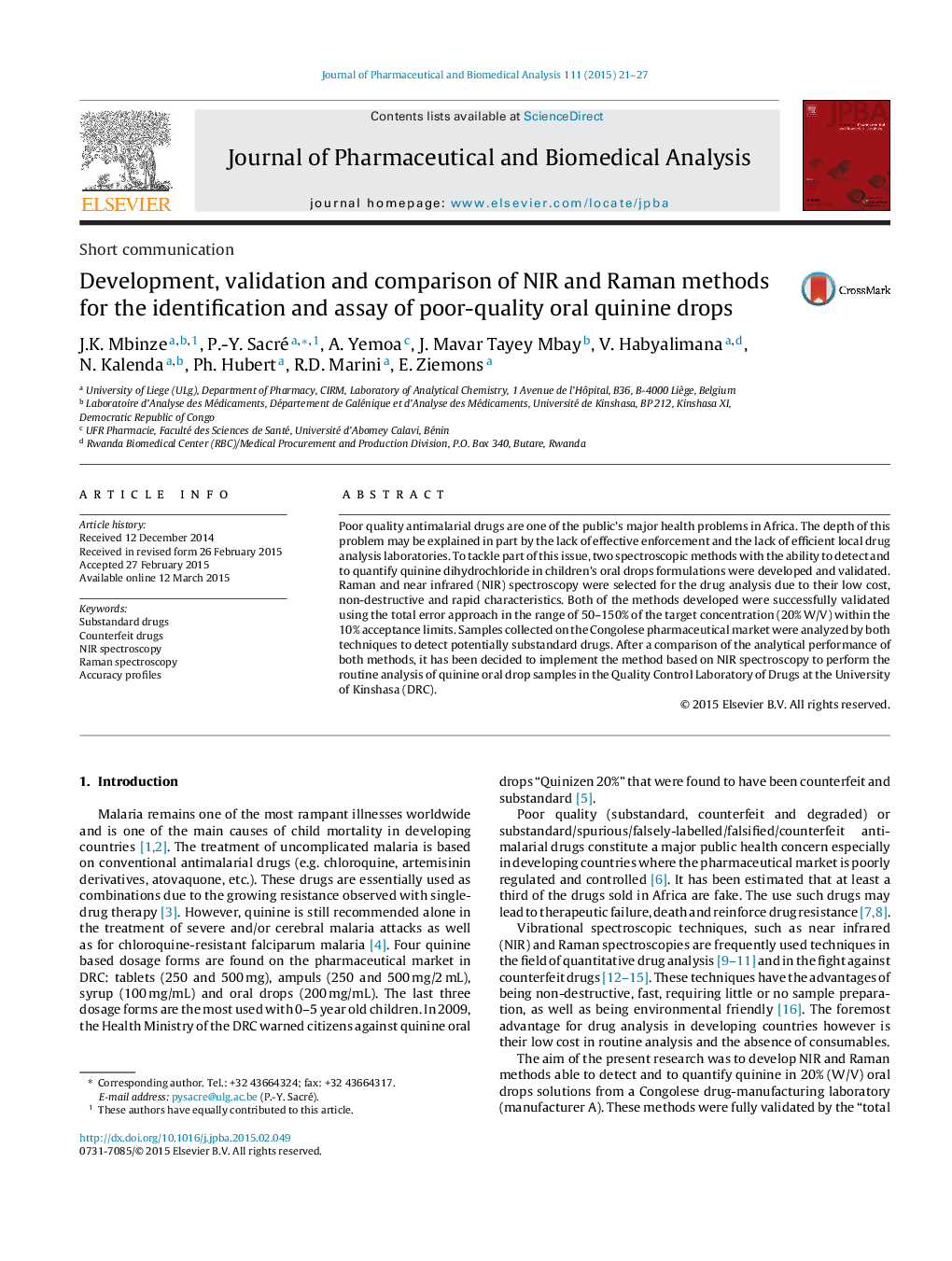| Article ID | Journal | Published Year | Pages | File Type |
|---|---|---|---|---|
| 1220777 | Journal of Pharmaceutical and Biomedical Analysis | 2015 | 7 Pages |
•The oral quinine drops were prepared.•Raman and NIR spectroscopy methods were developed and validated.•The methods were applied for analysis the real and substandard drugs.•The real samples were collected on the Congolese pharmaceutical market.
Poor quality antimalarial drugs are one of the public's major health problems in Africa. The depth of this problem may be explained in part by the lack of effective enforcement and the lack of efficient local drug analysis laboratories. To tackle part of this issue, two spectroscopic methods with the ability to detect and to quantify quinine dihydrochloride in children's oral drops formulations were developed and validated. Raman and near infrared (NIR) spectroscopy were selected for the drug analysis due to their low cost, non-destructive and rapid characteristics. Both of the methods developed were successfully validated using the total error approach in the range of 50–150% of the target concentration (20% W/V) within the 10% acceptance limits. Samples collected on the Congolese pharmaceutical market were analyzed by both techniques to detect potentially substandard drugs. After a comparison of the analytical performance of both methods, it has been decided to implement the method based on NIR spectroscopy to perform the routine analysis of quinine oral drop samples in the Quality Control Laboratory of Drugs at the University of Kinshasa (DRC).
Graphical abstractFigure optionsDownload full-size imageDownload as PowerPoint slide
